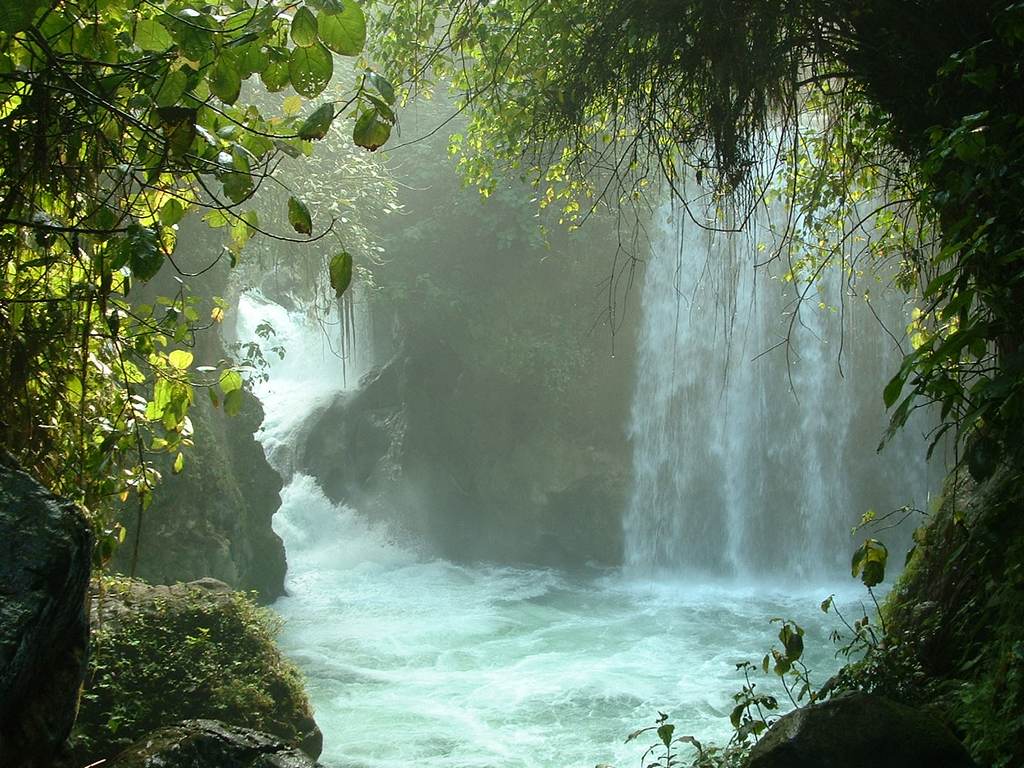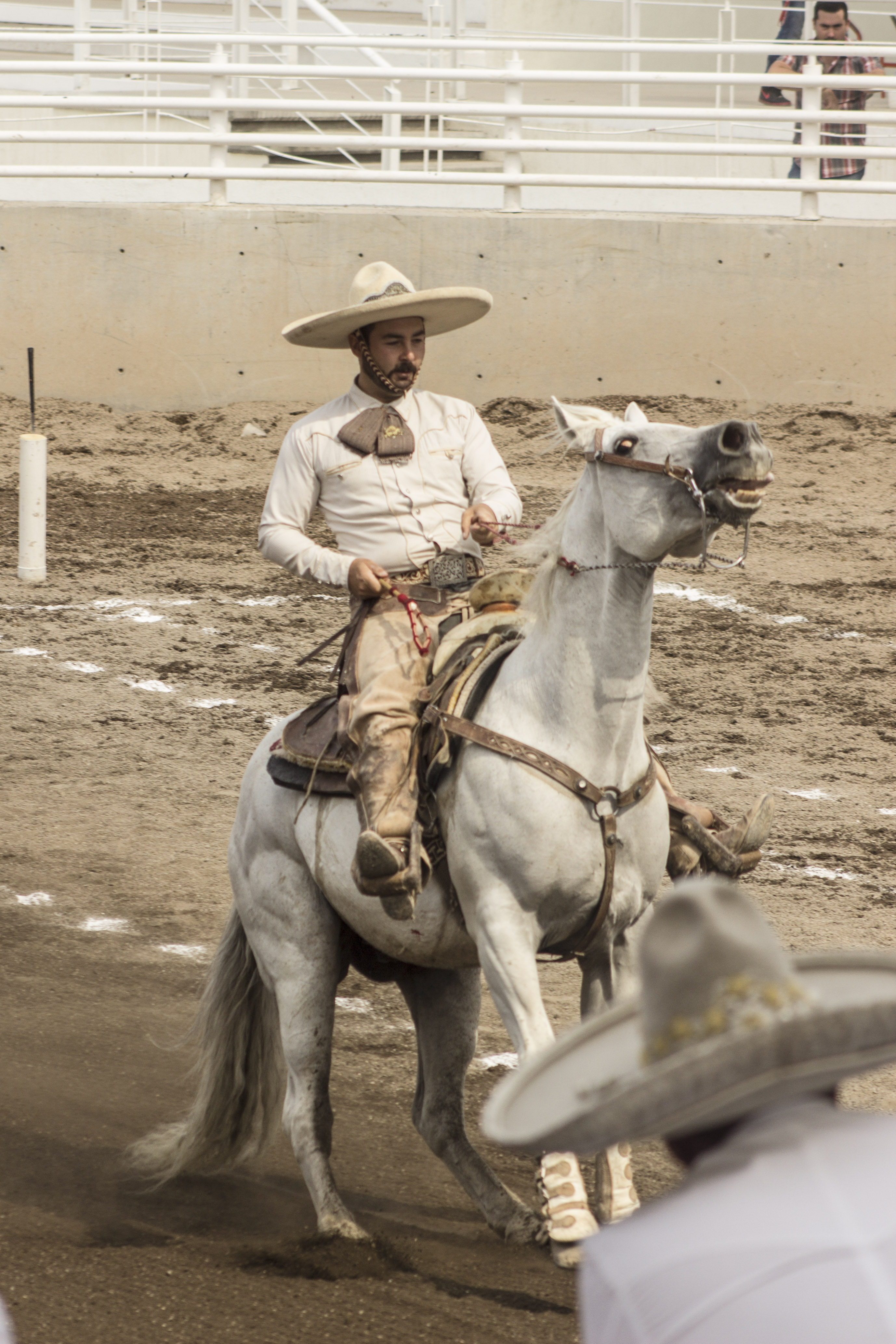|
Son Huasteco
Son huasteco is one of eight Mexican song styles and is a traditional Mexican musical style originating in the six state area of Northeastern Mexico called La Huasteca. It dates back to the end of the 19th century and is influenced by Spanish and indigenous cultures. Usually it is played by a ''conjunto huasteco, Trio Huasteco'' composed of a guitarra quinta huapanguera (a five course, eight stringed guitar-like instrument) a Jarana huasteca (a stringed instrument related to the Jarana huasteca, jarana) and a violin. Singers will often use the falsetto register. The son huasteco is particularly noteworthy for its flamboyant and virtuoso violin parts, although the style varies from state to state. Footwork often danced to son huasteco is the Zapateado (Mexico), Zapateado. Improvisation plays a strong role in the style, with musicians creating their own lyrics and arrangements to a standard repertoire. Typical ''sones huastecos'' are "''Cielito Lindo''", "''La huazanga''", "''La si ... [...More Info...] [...Related Items...] OR: [Wikipedia] [Google] [Baidu] |
Fandango
Fandango is a lively partner dance originating in Portugal and Spain, usually in triple metre, triple meter, traditionally accompanied by guitars, castanets, tambourine or hand-clapping. Fandango can both be sung and danced. Sung fandango is usually bipartite: it has an instrumental introduction followed by "variaciones". Sung fandango usually follows the structure of "cante" that consist of four or five octosyllabic verses (coplas) or musical phrases (tercios). Occasionally, the first copla is repeated. The meter of fandango is similar to that of the bolero and seguidilla. It was originally notated in time, of slow tempo, mostly in the minor, with a trio in the major; sometimes, however, the whole was in a major key. Later it took the 3-4 tempo, and the characteristic Spanish rhythm. Origins The earliest fandango melody is found in the anonymous "Libro de diferentes cifras de guitarra" from 1705, and the earliest description of the dance itself is found in a 1712 letter by M ... [...More Info...] [...Related Items...] OR: [Wikipedia] [Google] [Baidu] |
La Huasteca
La Huasteca is a geographical and cultural region located partially along the Gulf of Mexico and including parts of the states of Tamaulipas, Veracruz, Puebla, Hidalgo, San Luis Potosí, Querétaro and Guanajuato. It is roughly defined as the area in which the Huastec people had influence when their civilization was at its height during the Mesoamerican period. Today, the Huastecs occupy only a fraction of this region with the Nahua people now the most numerous indigenous group. However, those who live in the region share a number of cultural traits such as a style of music and dance, along with religious festivals such as Xantolo. Geography and environment Historically and ethnically, the Huasteca region is defined by the area dominated by the Huastecs at their height. The actual extension of the region is somewhat disputed as well as how it should be sub-divided. Geographically it has been defined as from the Sierra Madre Oriental to the Gulf of Mexico with the Sierra de ... [...More Info...] [...Related Items...] OR: [Wikipedia] [Google] [Baidu] |
Violin
The violin, sometimes referred to as a fiddle, is a wooden chordophone, and is the smallest, and thus highest-pitched instrument (soprano) in regular use in the violin family. Smaller violin-type instruments exist, including the violino piccolo and the pochette (musical instrument), pochette, but these are virtually unused. Most violins have a hollow wooden body, and commonly have four strings (music), strings (sometimes five-string violin, five), usually tuned in perfect fifths with notes G3, D4, A4, E5, and are most commonly played by drawing a bow (music), bow across the strings. The violin can also be played by plucking the strings with the fingers (pizzicato) and, in specialized cases, by striking the strings with the wooden side of the bow (col legno). Violins are important instruments in a wide variety of musical genres. They are most prominent in the Western classical music, Western classical tradition, both in ensembles (from chamber music to orchestras) and as solo ... [...More Info...] [...Related Items...] OR: [Wikipedia] [Google] [Baidu] |
Huapanguera
The huapanguera, guitarra quinta huapanguera or guitarra huapanguera is a Mexican guitar-like instrument that usually forms part of a conjunto huasteco ensemble, along with the jarana huasteca and violin. Because of its large body and deeper structure, the huapanguera is able provide a much deeper sound compared to a regular acoustic guitar. Here it takes on the role of the bass instrument using a rhythmical strumming technique. Its physical construction features a large resonating body with a short neck. It normally has around 10 frets which stop at the point where the fingerboard meets the top. The stringing and tuning arrangement consists of 8 nylon strings in 5 courses. Standard tuning is G2+G2 – D3+D3 – G3+G3 – B3+ – E4 (GG – dd – gg – b – e in Helmholtz pitch notation), although there are many other string arrangements and tunings. Son Huasteco The quinta huapanguera is an instrument distinct of the La Huasteca, Huasteca region of Mexico. It is used whe ... [...More Info...] [...Related Items...] OR: [Wikipedia] [Google] [Baidu] |
Jarana Huasteca
The jarana huasteca, jarana de son huasteco or jaranita is a string instrument. It is most often called simply jarana. It is a guitar-like chordophone with 5 strings, tuned in thirds (low to high): G, B, D, F# and A. It has a range similar to the mandolin, and a scale length of around 40 cm. The instrument usually forms part of the '' trío huasteco'' ensemble, along with the ''quinta huapanguera'' and violin, taking on the role of the rhythmic accompaniment. It is usually used to play huasteca music. Compared to the ''guitarra huapanguera The huapanguera, guitarra quinta huapanguera or guitarra huapanguera is a Mexican guitar-like instrument that usually forms part of a conjunto huasteco ensemble, along with the jarana huasteca and violin. Because of its large body and deeper str ...'', the instrument is smaller and higher-pitched. References * {{DEFAULTSORT:Jarana Huasteca Mexican musical instruments Guitar family instruments ... [...More Info...] [...Related Items...] OR: [Wikipedia] [Google] [Baidu] |
Huapango
is a family of Mexican music styles. The word likely derives from the Nahuatl word that literally means 'on top of the wood', alluding to a wooden platform on which dancers perform dance steps. It is interpreted in different forms, the most common being the classic interpreted by a trio of musicians (); the interpreted by a group (); and the , which can be performed by a large group of musicians. () The classical brings together a violin, a and a . The classical is characterized by a complex rhythmic structure mixing duple and triple metres which reflect the intricate steps of the dance. When the players sing (in a duet, in a falsetto tone), the violin stops, and the (the rhythm provided by heels hitting the floor) softens. The is danced by men and women as couples. A very popular is , in which two singers alternate pert and funny repartées. Huapango arribeño or son arribeño is a style of music played in the "zona media" region (part of San Luis Potosi, Qu ... [...More Info...] [...Related Items...] OR: [Wikipedia] [Google] [Baidu] |
Charro
''Charro'', in Mexico, is historically the horseman from the countryside, the Ranchero, who lived and worked in the haciendas and performed all his tasks on horseback, working mainly as vaqueros and caporales, among other jobs. He was renowned for his superb horsemanship, for his skill in handling the lasso, and for his unique costume designed specially for horseback riding. Today, this name is given to someone who practices ''charreada'' (similar to a rodeo), considered the national sport of Mexico which maintains traditional rules and regulations in effect from colonial times up to the Mexican Revolution. Etymology The word ''charro'' (syn. ''charrar, charra'') was first documented in Spain in the book "Vocabulario de refranes y frases proverbiales" (1627) by Gonzalo Correas as a synonym of dumb or stupid person. More than one hundred years later, in 1729, in the first dictionary of the Spanish language edited by the Real Academia Española, the "Diccionario de Autorida ... [...More Info...] [...Related Items...] OR: [Wikipedia] [Google] [Baidu] |
Jarabe Tapatío
The Mexican hat dance, also known as ''Jarabe Tapatío'', is the national dance of Mexico. It originated as a courtship dance in Guadalajara, Jalisco, during the 19th century, although its elements can be traced back to the Spanish ''zambra'' and ''jarabe gitano'', which were popular during the times of the viceroyalty. Female dancers traditionally wear a '' china poblana'' outfit, while the male dancers dress as ''charros,'' and their steps are characterized by flirtatiously stepping around the brim of their partner's hat. The standard music of the ''jarabe tapatío'' was composed by Jesús González Rubio in the 19th century. However, its more common instrumental arrangement dates from the 1920s. Sometimes it is confused with La Raspa, another Mexican dance. Nowadays, its music is most commonly performed by either mariachi groups or string ensembles. History The word ''jarabe'' (from Arabic ''xarab''), meaning "syrup", denotes the combination of various Mexican musics ( ... [...More Info...] [...Related Items...] OR: [Wikipedia] [Google] [Baidu] |
Zapateado (Mexico)
The zapateado is a group of dance styles of Mexico, characterized by a lively rhythm punctuated by the striking of the dancer's shoes, akin to tap dance. The name derives from the Spanish word '' zapato'' for "shoe": ''zapatear'' means to strike with a shoe. It is widely used in sones, huapangos and chilenas. The term is also used to refer to percussive footwork in some Spanish/Latin dances that involve elaborate shoe clicking and tapping and to the percussion A percussion instrument is a musical instrument that is sounded by being struck or scraped by a percussion mallet, beater including attached or enclosed beaters or Rattle (percussion beater), rattles struck, scraped or rubbed by hand or ... music produced by shoe striking. See also * Zapateado (Spain) References *David Ewen, ''Encyclopedia of Concert Music''. New York: Hill and Wang, 1959. Dance in Mexico Uses of shoes {{dance-stub ... [...More Info...] [...Related Items...] OR: [Wikipedia] [Google] [Baidu] |
Mariachi
Mariachi (, , ) is a genre of regional Mexican music dating back to at least the 18th century, evolving over time in the countryside of various regions of western Mexico. The usual mariachi group today consists of as many as eight violins, two trumpets and at least one guitar, including a high-pitched Mexican Vihuela and an acoustic bass guitar called a guitarrón, and all players take turns singing lead and doing backup vocals. During the 19th- and 20th-century migrations from rural areas into Guadalajara, along with the Mexican government's promotion of national culture, mariachi came to be recognized as a distinctly Mexican ''son''. Modifications of the music include influences from other music, such as polkas and waltzes, the addition of trumpets, and the use of charro outfits by mariachi musicians. The musical style began to take on national prominence in the first half of the 20th century, with its promotion at presidential inaugurations and on the radio in the 1920s. ... [...More Info...] [...Related Items...] OR: [Wikipedia] [Google] [Baidu] |



